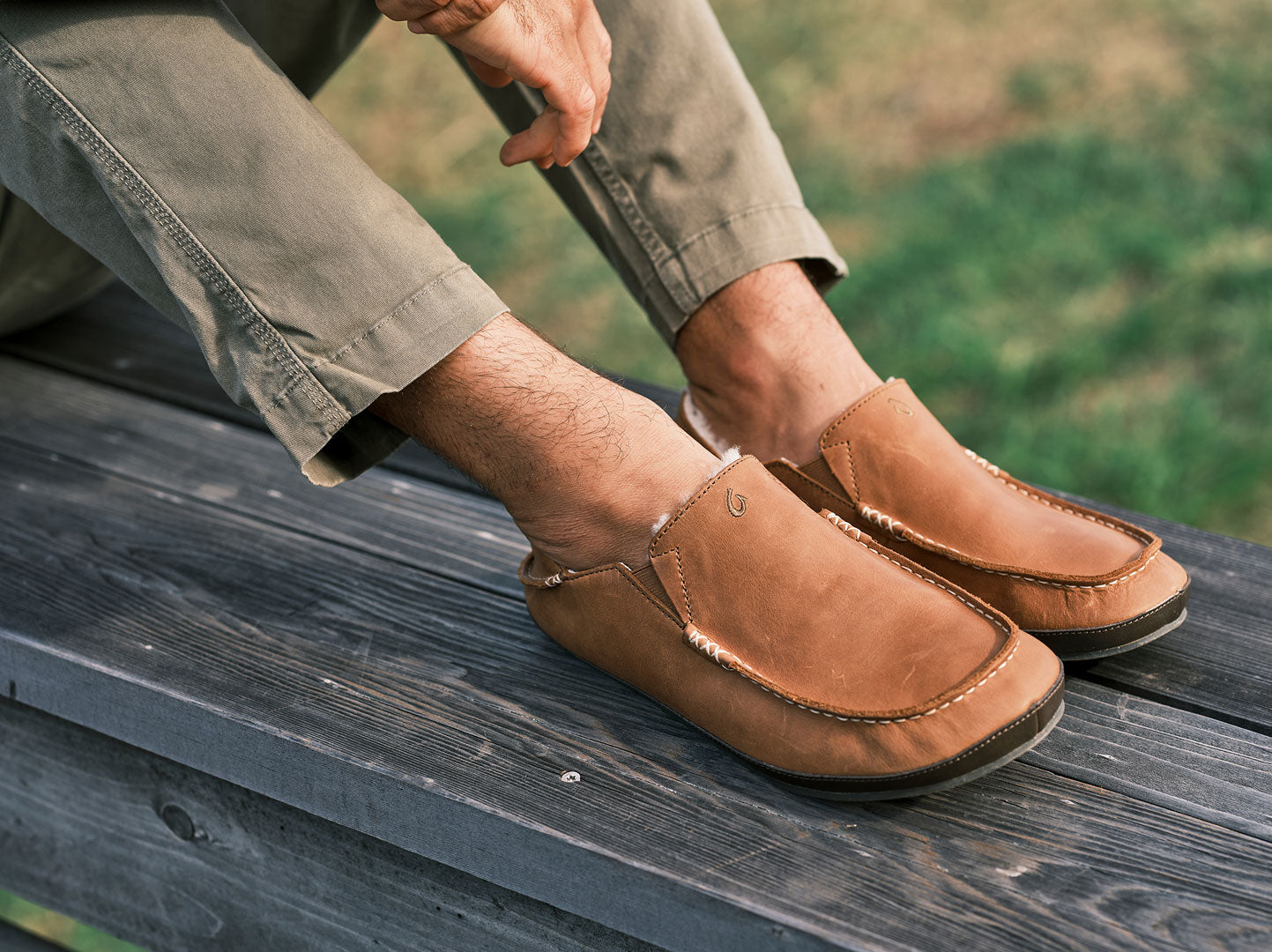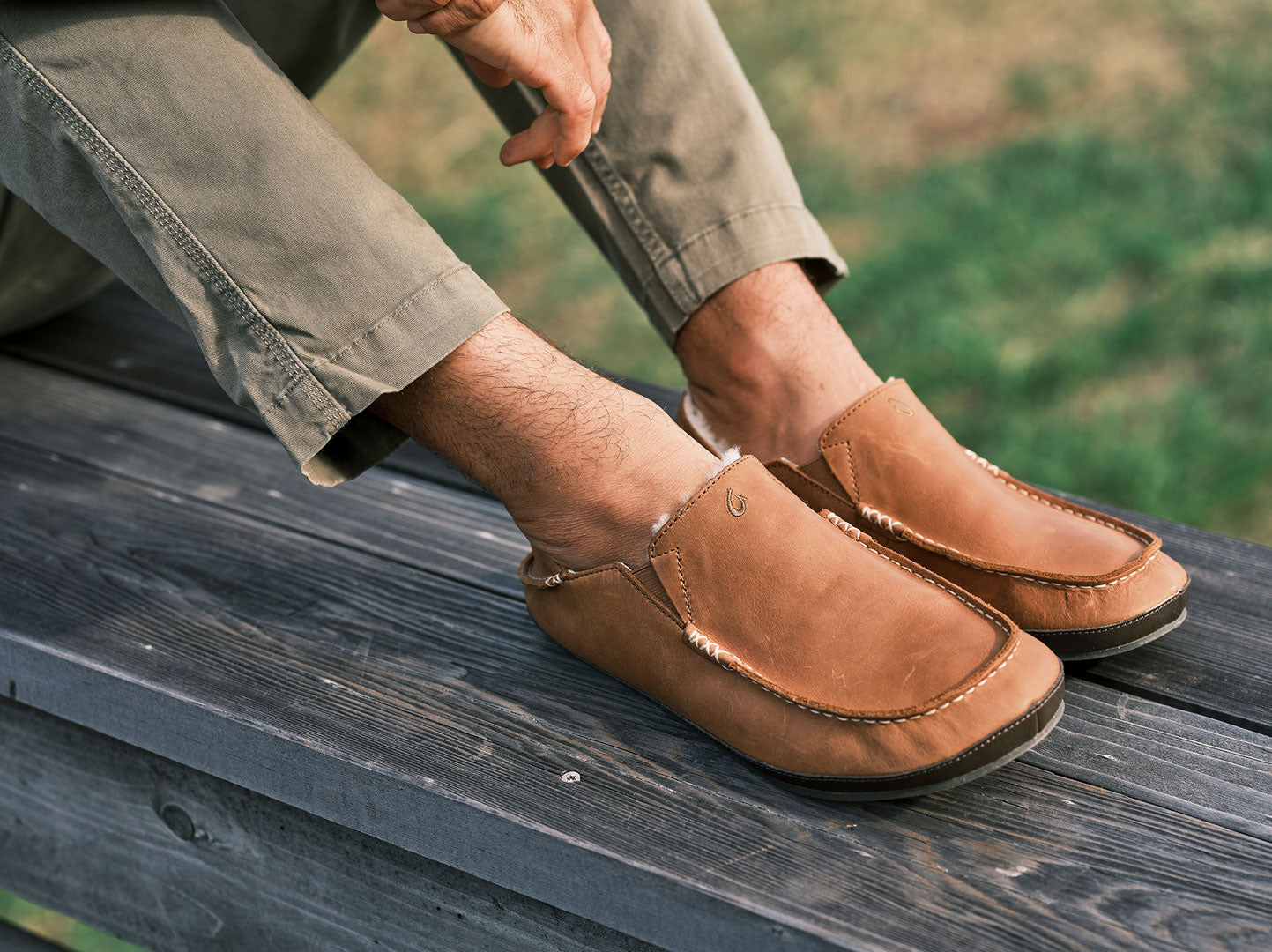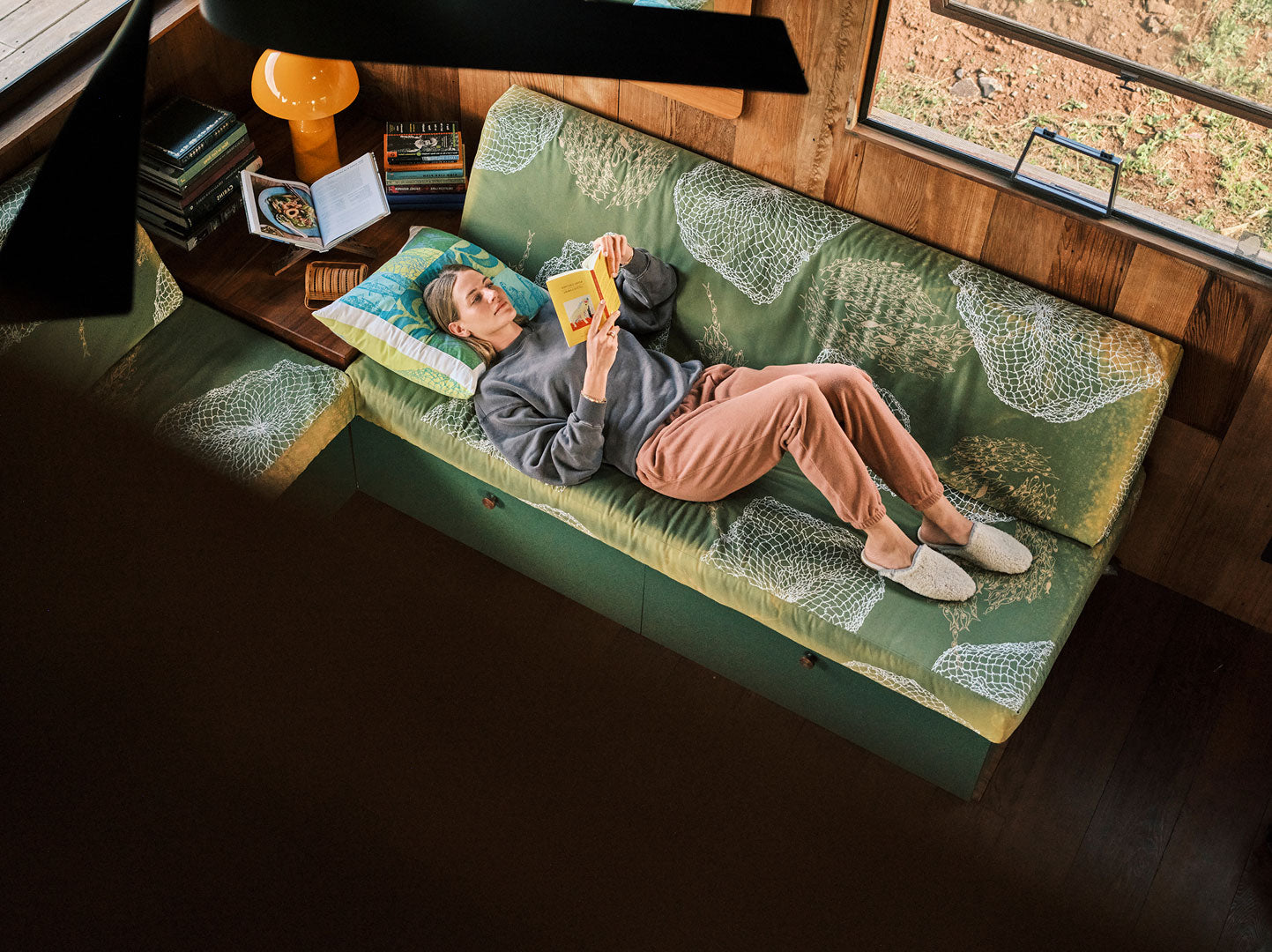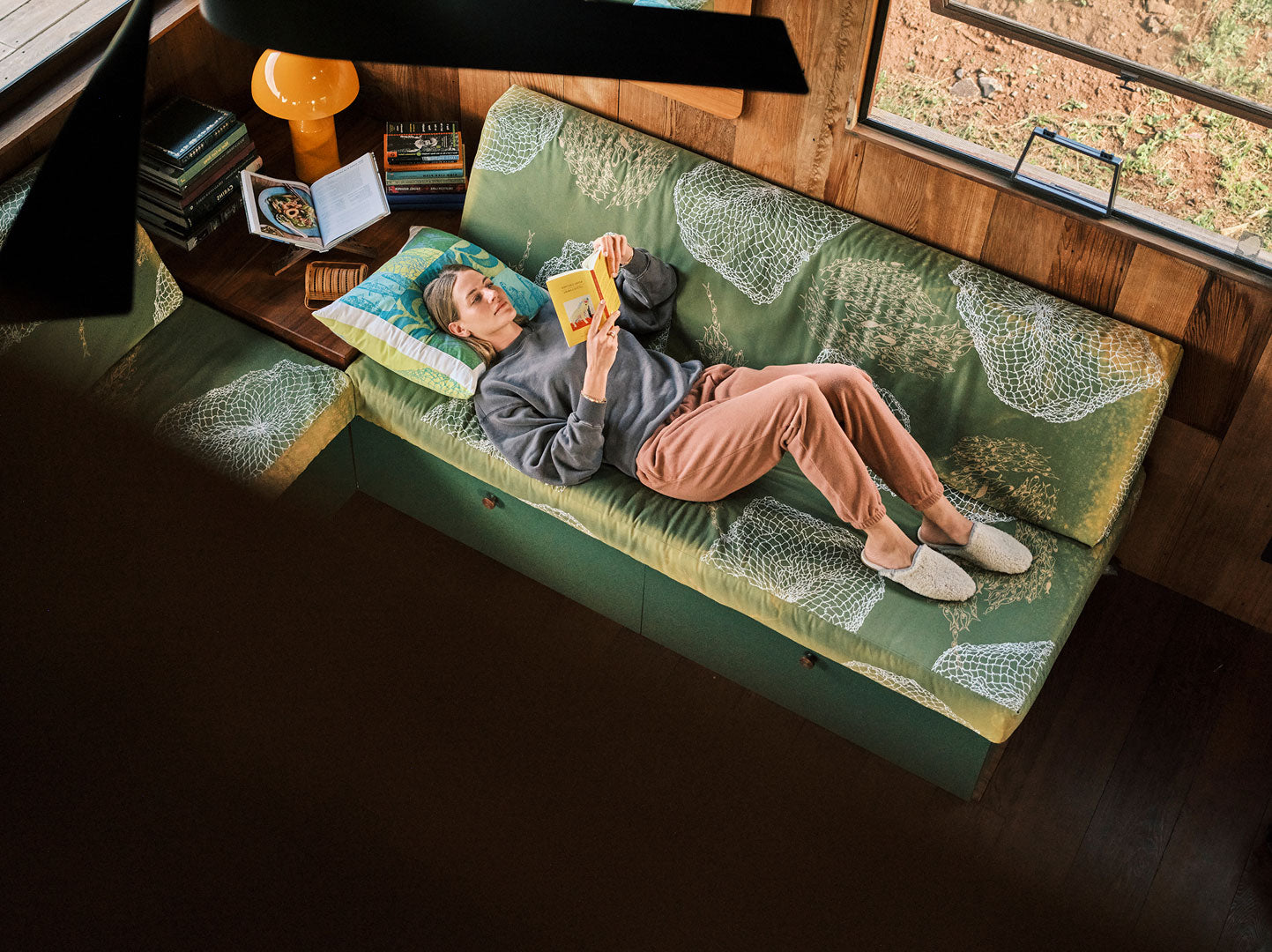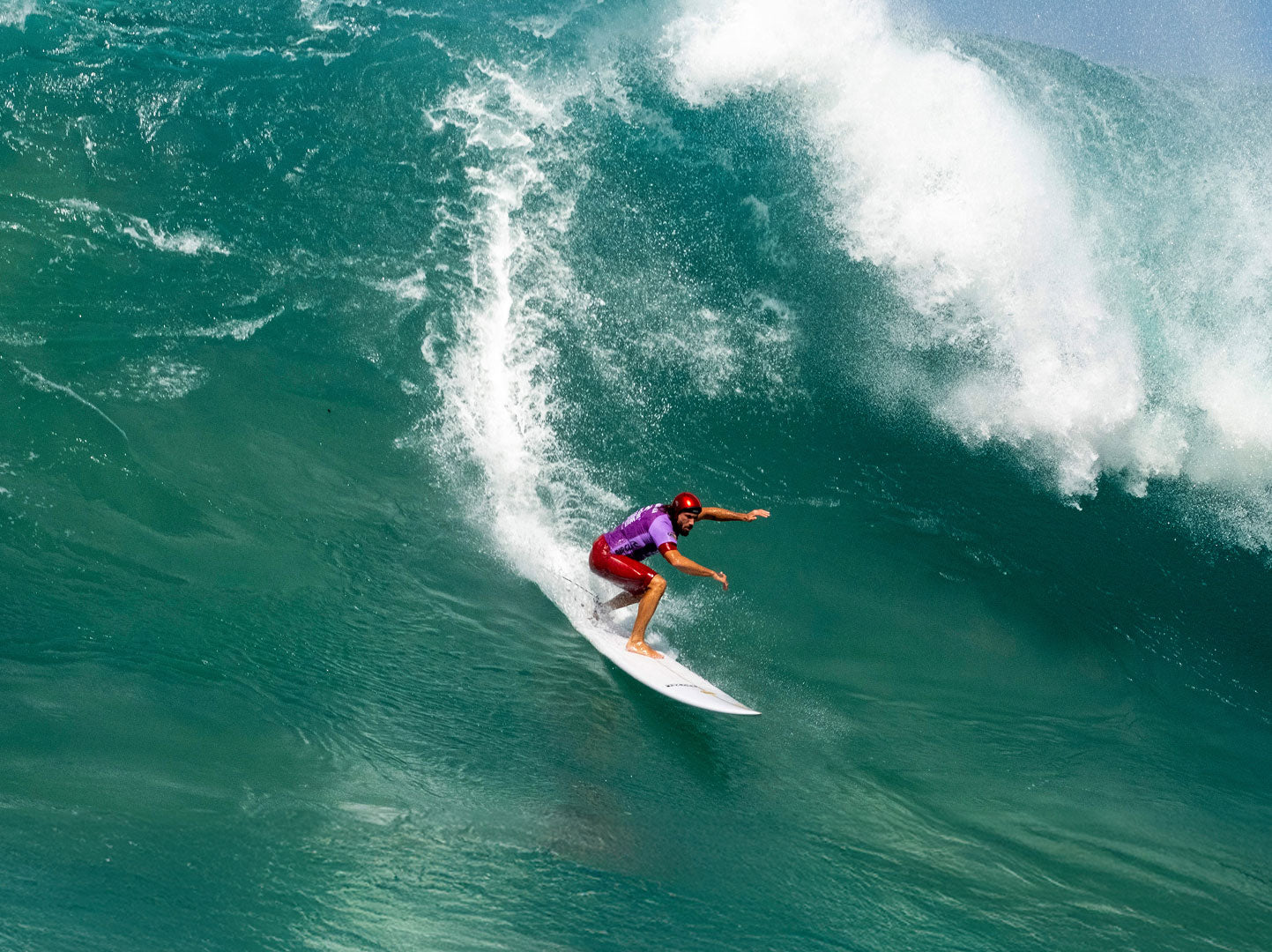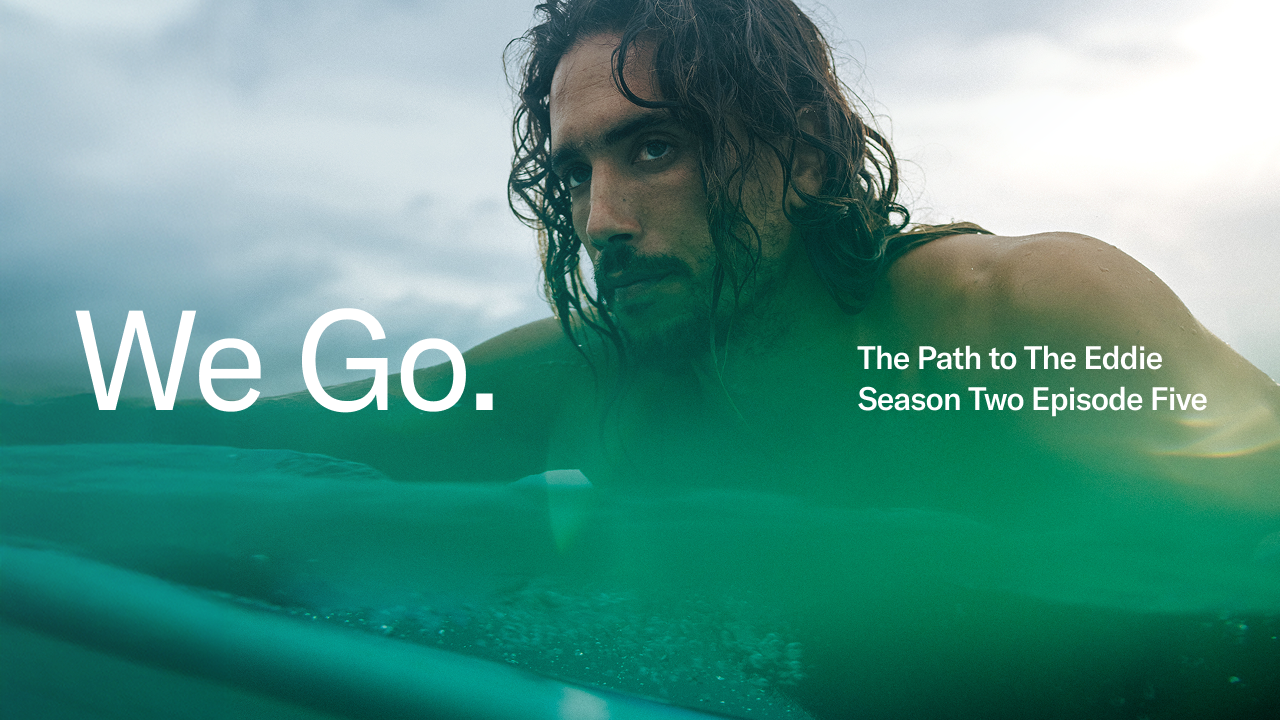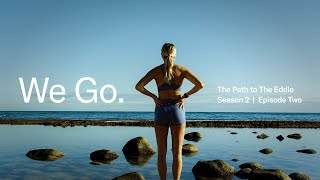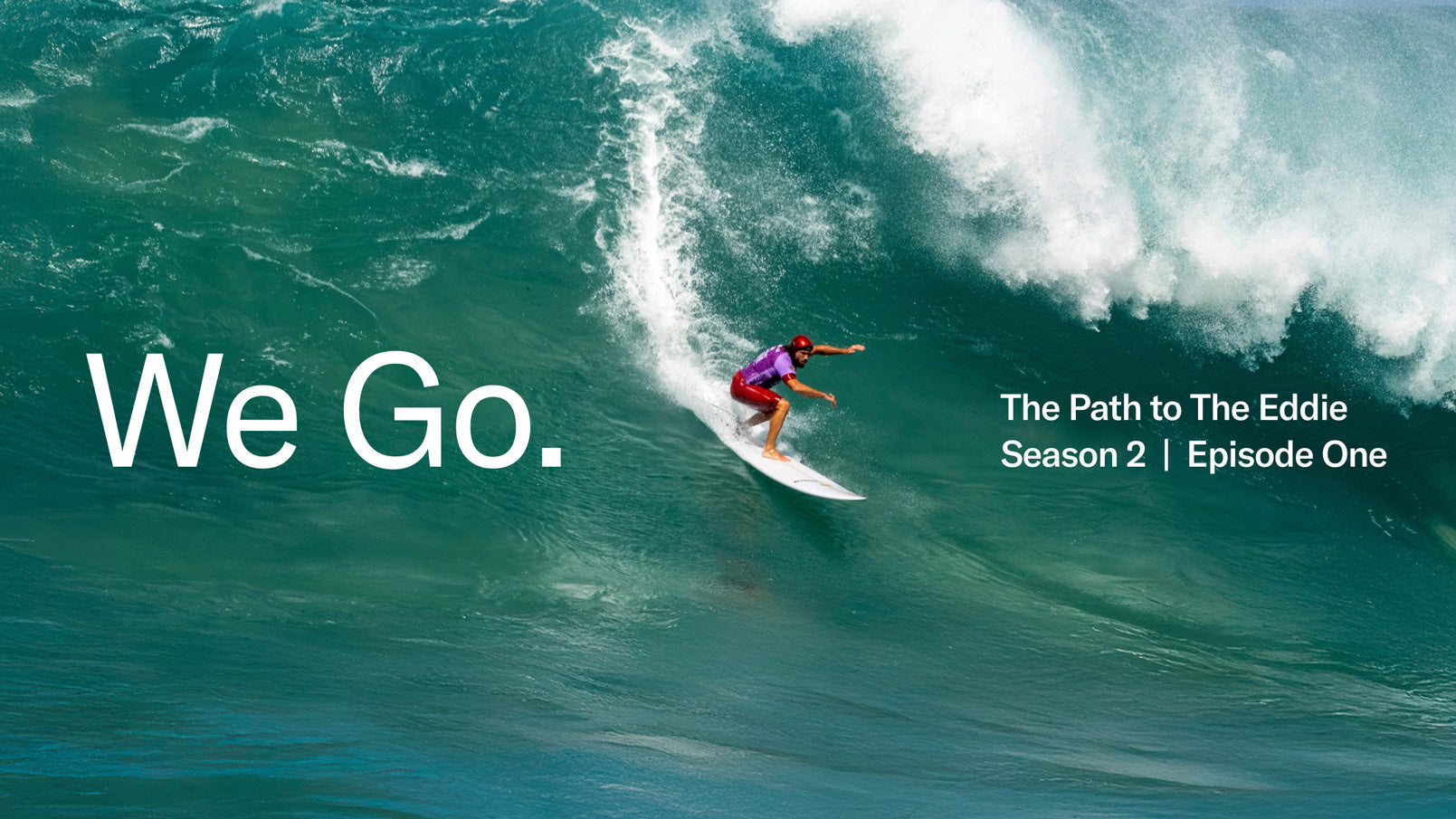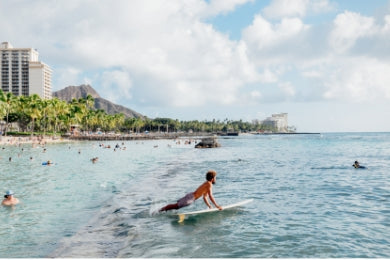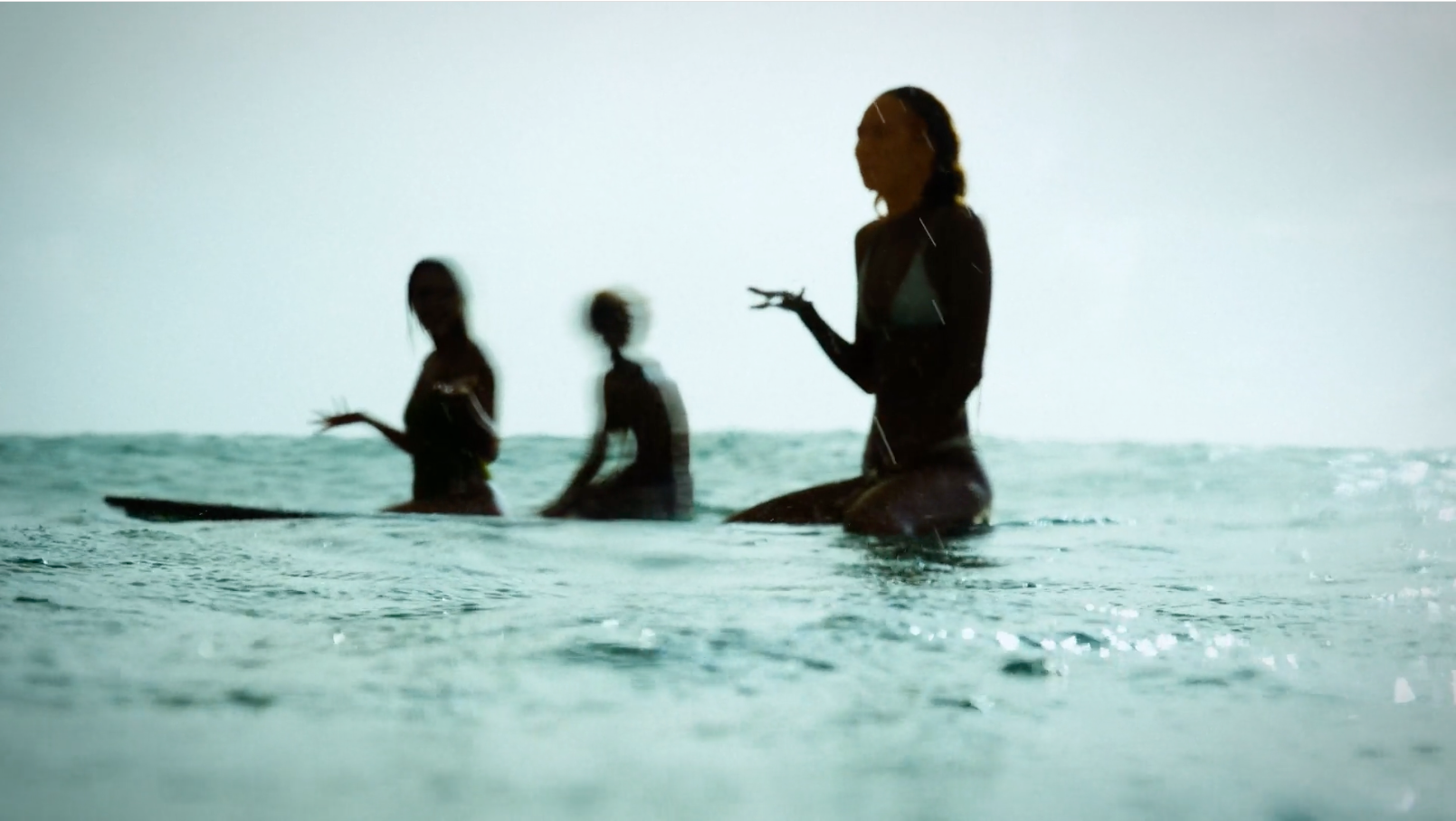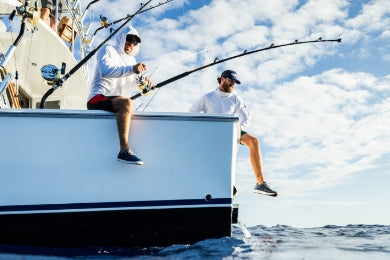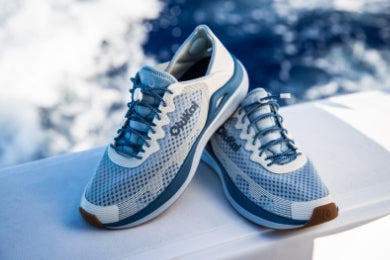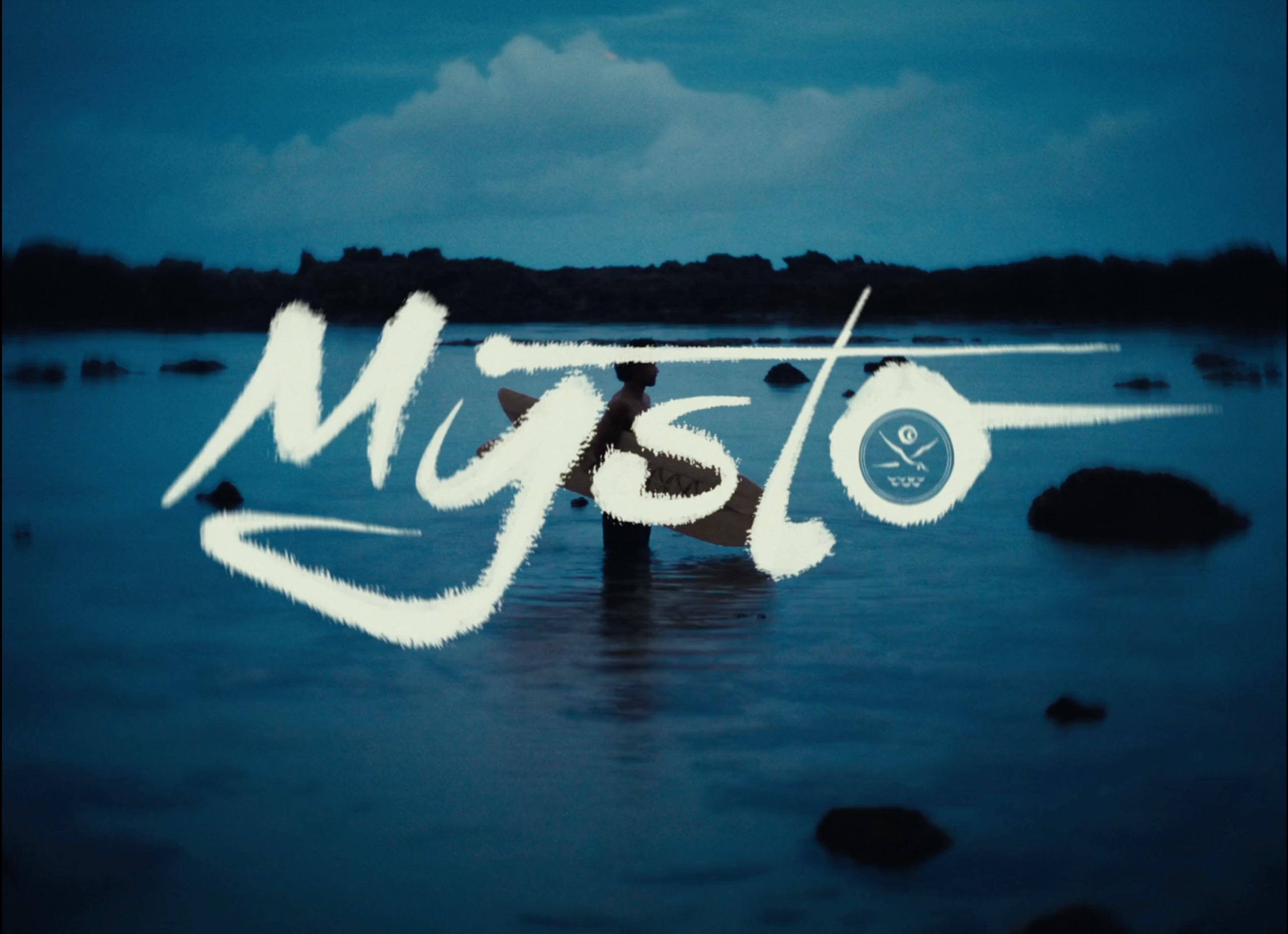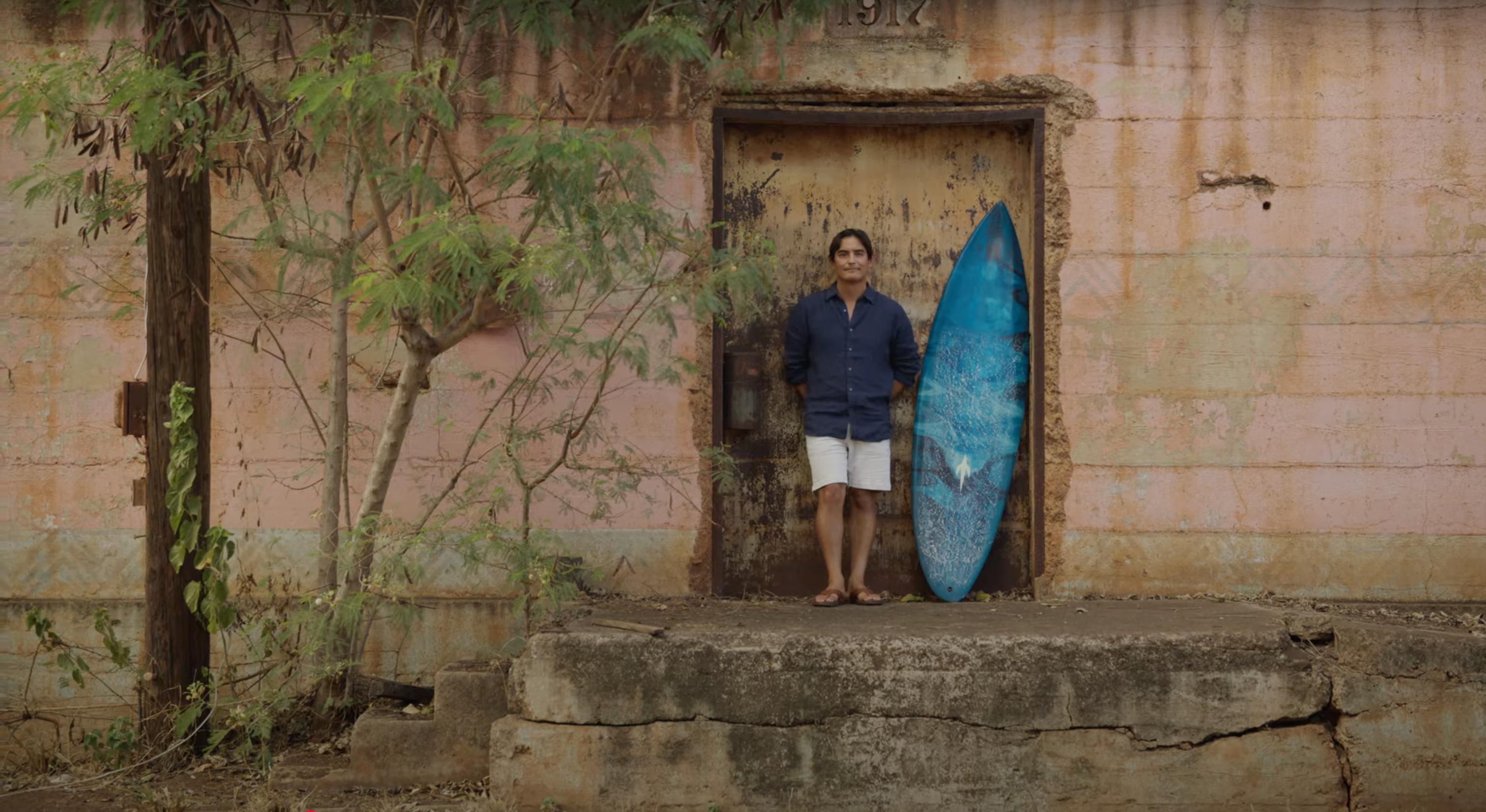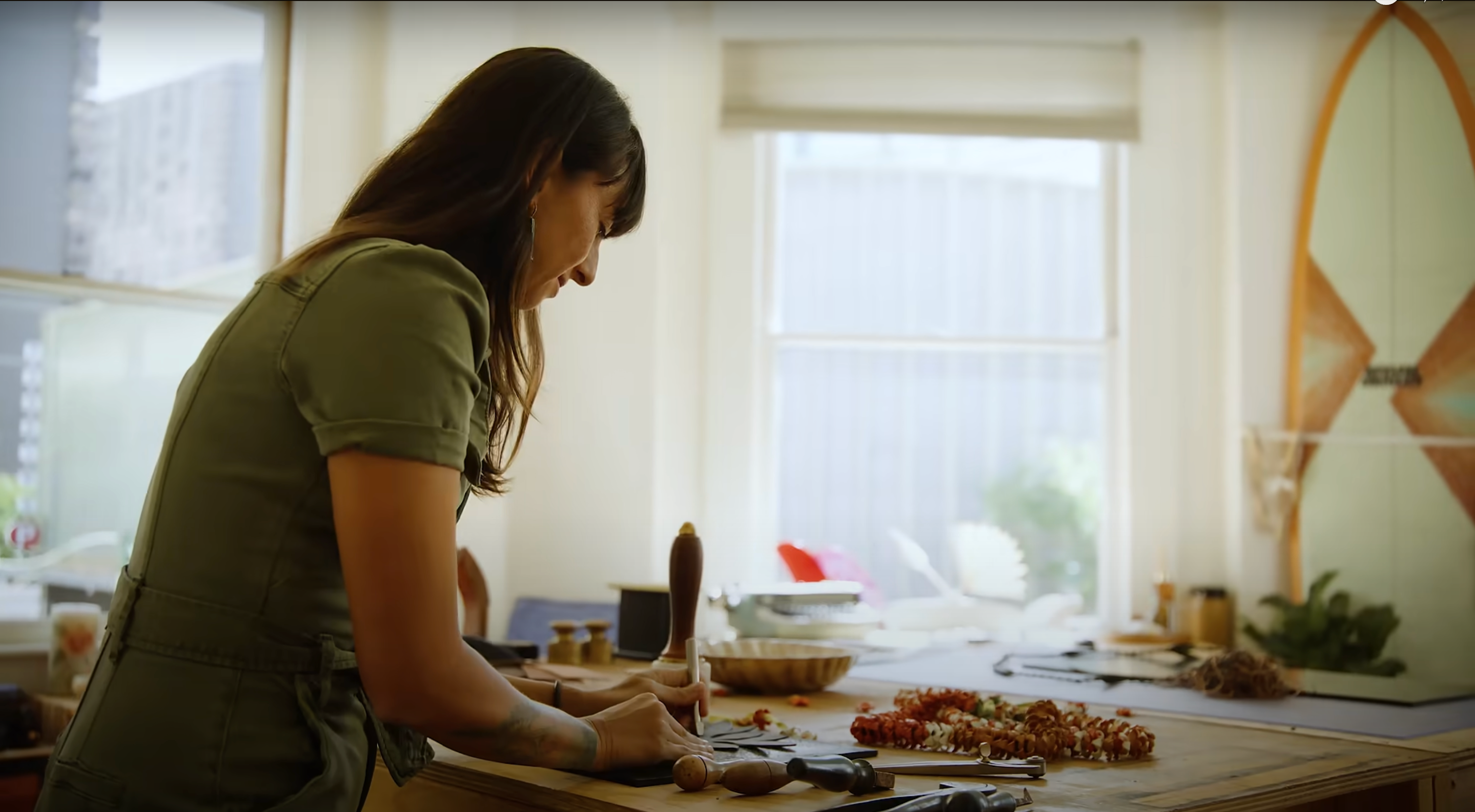Some people are fascinated by history and like to argue it. Others just want to go surf. Now that standup paddling has grown into a big sensation that is sweeping the nation, some people like to debate SUP history: Where and how did standup paddling originate? How far back does it go? Who was the first person to stand on a board with a paddle in their hand, stroke into a wave and ride it – all standing up. What boards were the Originators riding? What paddles? Common wisdom usually says something like “standup paddling began with the Hawaiian beach boys, some time in the early 20th Century.” But some careful digging in history shows that standup paddling might have come to Hawaii by way of Australia.
Go online and tap “duke standup paddling” into YouTube and you will find these color, moving images from 1939, showing Duke Kahanamoku sitting on a huge surfboard, paddling into a wave using a two-bladed paddle with a leash attaching the paddle to the nose of a big, thick board. Duke sit-paddles into a wave, then stands up and rides it. That is sitdown paddling and not standup paddling and what is Duke riding anyway? That board is huge!
Dig a little deeper and you will find this scratchy, black and white movie, also from circa 1939. Go to around 2:40 and look close and you will see Duke Kahanamoku on a board so big, there are three adults sitting on the board behind him. He goofs off a bit, pretending to paddle as he is sitting, but then he stands with that two-bladed paddle, catches a wave and then rides it until the malahini behind him shift their weight too much and make him fall off. Is that the Genesis of standup paddling? Duke on a huge board in the late 1930s, dumping tourists into the warm waters of Waikiki? Some people care, some don’t.

About three years ago I wrote a book called The Art of Standup Paddling for Falcon Guides. The book was an instructional guide, but the part I enjoyed most was delving past the accepted, common wisdom to find the origins of standup paddling.

The basic idea of that chapter is that humans have always stood up and paddled boats and small craft, and there are lots of examples, going back centuries: The gondoliers of Venice, the hasake paddlers of Israel and the Middle East, the one-legged paddling fishermen of Inle Lake in Burma. Humans have always stood up and paddled boats and small craft, but there is no sign of standup paddling in Hawaii through the 19th Century and into the 20th. It’s unlikely Hawaiians could standup paddle their traditional olo and alaia – those boards were long, narrow and thin and only suited for standup paddling by a menehune. Not giant Polynesians. I first saw that image of Duke standing up and paddling in Jack McCoy’s surf movie Blue Horizon. While working on The Art of Standup Paddling, I poked around in history some more, and found similar images. That was an “aha!” moment. But what were the facts? What was that board? Where did Duke get it? And is that board the Genesis of standup paddling in Hawaii? This is how I tried to explain it in the original version of The Art of Standup Paddling: A YouTube clip of Duke doing that went out in an email sent out to Hawaiian/Australian filmmaker Jack McCoy, California film historian Scott Starr, Australia journalist Nick Carroll, Australian surf historian Geoff Cater and Hawaiian historian Desoto Brown. It returned very fast responses:“Australian Kayak, Not a Surfboard GET IT STRAIGHT!” Jack McCoy bellowed in the subject line, then settled down: Yeah mate… I got that clip off of a news reel I bought… It's stretching the truth that it's SUP, the board was an Australian kayak that was taken to HI and obviously got the Dukes attention. I've got photos of Aussie guys standing up on their kayaks too - way before the Duke if you want to open that can of worms. California surf historian Scott Starr – who has a collection of surf movies that makes the author envious - confirmed that in an email a few minutes later: That footage you saw of Duke is from about 1939. I actually have color footage of Duke on a stand up around the same time… same board, probably different day… he is riding by himself. Oh also these stand ups were big in Australia around the same time. I have footage of guys riding them there in the '30's too. In my head I can see them sitting down riding them. Not sure if the footage actually shows someone standing up after catching a wave... but maybe... they were, I think, sit down paddle boards but Duke and others would stand up.

Duke Kahanamoku in color, with a two-sided paddle in his hand and a leash connected to the nose of the board, doing something pretty close to modern standup paddleboarding on an Australian surf ski, circa 1939. Image courtesy Scott Starr. And then this email from Nick Carroll, one of the top surf journalists and surf historians in the Lucky Country: What you're seeing is an Australian surf ski. This craft was invented by a bloke in Port Macquarie, New South Wales, around 1912, after he'd become intrigued by the idea of riding waves and discovered his uncle's open canoe wasn't too good at it. (In bumpy Australian sandbar waves, canoes fill with water.) The surf ski was a hollow, wood-constructed craft which was paddled with a twin blade paddle from a sitting position, but a lot of ski riders got into standing up on 'em while riding waves… Duke was given one by a touring Aussie surf team in 1939.

An Australian bloke standing up on an Australian surf ski, circa ???. Image courtesy Jack McCoy. Geoff Cater is another dedicated historian of Australian and all surf history, who filled in some of the blanks: When SUP first appeared in the media sometime in the 1990s, one company or commentator suggested that this was the re-introduction of an ancient Hawaiian technique. At the time I viewed this as unsupportable and simply a marketing attempt to give the product some historical credibility. As for the film of Duke Kahanamoku standing up on a board. Rather than a ‘giant surfboard,’ the craft is undoubtedly the Australian surf ski that was sent to him by the Walker brothers from Manly Beach sometime in the 1930s. Adrian Curlewis, a longtime president of the Surf Life Saving Association and Palm Beach boardrider noted:’The Walker Brothers sent a surf ski to Duke Kahanamoku at Honolulu and members of the Australian Pacific Games team which visited Honolulu in 1939 say Duke was often seen paddling around on his ‘ski from Australia.’ Desoto Brown is the Collections Manager for the Bishop Museum in Hawaii - home to tens of thousands of still images and hundreds of hours of moving images of old Hawaii: The shot of Duke comes from a 1938 Hawaii travelogue produced by Castle Films. He’s not identified in the film; it’s just a generic surfing shot in which he happens to be on the wave. The board that he/they are on looks odd, as I remember it. I have seen another film showing paddleboarding in the 1930s or ‘40s, but I can’t remember where I saw this, who had it, or anything else about it – which aggravates me. I only recall thinking at the time that this was a significant early view of the sport. And that’s all I can remember. Questions answered, but still questions: Was Duke standup paddleboarding? Is it possible that sup originated with the Waikiki beach boys, inspired by the gift of an Australian surf ski in the 1930s? Controversial stuff – which could get a careless historian spitted and boiled in the Hawaiian Islands - but important in establishing a link in the evolution, because what John Zapotocky and the Ah Choy family were doing in Waikiki from the 1950s on was absolutely an ancestor of what Laird Hamilton, Dave Kalama, Brian Keaulana and Mel Puu were doing in the Hawaiian Islands from the 1990s into the 21st Century. And they were inspired by Duke, but where did Duke get the idea? Some people are interested in history and love to discover and debate it. Others don’t give a stuff, and just want to get some waves. Some people are curious and knowledgable about the origins of SUP, others just want to get waves. Sam George likes to get waves, but he also likes to debate the origins of things. He is fairly, eloquently adamant that SUP began with Laird Hamilton. As he said in this email from October 10th of this year: Keep in mind Duke was messing around on a surf ski with a double-bladed paddle. The idea of deliberately using a paddle on a surfboard never sprung from Duke's antics. Thirty years later the Ah Choy's used rubber raft pool paddles and boat oars and not specifically for surfing. And almost a decade after that Mr. Zapotocky used an oar. Those two examples are the only ones that exist before Laird built his proto-paddle. That hardly represents evolution. 18th century Afghan tribesmen played ritual sport where on horseback they dragged the body of a goat up and down a rough field trying to cross their opponents’ goal line. Interesting, but you can’t call it polo. Or football. As I've said many times, paddling while standing up started soon after man first took to sea in boats—stand-up paddling started with Laird. The debate rages on (among people who care about history) and I am hoping to update that history of SUP in the revised version of The Art of Standup Paddling, which I am working on while here in Waikiki – the center of everything surf and SUP. I’m lagging on that revision but the publisher doesn’t seem to be too worried about it. However, they did ask me to send some contenders for a cover they can mock up and put in their brochures and online to announce the new version of the book. I wanted a photo of Diamond Head on the cover and sent around a mass email to all the photographers
I could think of who might have that shot. Jim Russi came back with an email of about a dozen images, and one winner.  This is Leleo Kinimaka, showing a modern SUP move in the birthplace of it all, with Diamond Head framing it all. Perfect.Pretty sure that’s gonna be the next cover of The Art of Standup Paddling.
This is Leleo Kinimaka, showing a modern SUP move in the birthplace of it all, with Diamond Head framing it all. Perfect.Pretty sure that’s gonna be the next cover of The Art of Standup Paddling.

 Duke Kahanamoku in color, with a two-sided paddle in his hand and a leash connected to the nose of the board, doing something pretty close to modern standup paddleboarding on an Australian surf ski, circa 1939. Image courtesy Scott Starr. And then this email from Nick Carroll, one of the top surf journalists and surf historians in the Lucky Country: What you're seeing is an Australian surf ski. This craft was invented by a bloke in Port Macquarie, New South Wales, around 1912, after he'd become intrigued by the idea of riding waves and discovered his uncle's open canoe wasn't too good at it. (In bumpy Australian sandbar waves, canoes fill with water.) The surf ski was a hollow, wood-constructed craft which was paddled with a twin blade paddle from a sitting position, but a lot of ski riders got into standing up on 'em while riding waves… Duke was given one by a touring Aussie surf team in 1939.
Duke Kahanamoku in color, with a two-sided paddle in his hand and a leash connected to the nose of the board, doing something pretty close to modern standup paddleboarding on an Australian surf ski, circa 1939. Image courtesy Scott Starr. And then this email from Nick Carroll, one of the top surf journalists and surf historians in the Lucky Country: What you're seeing is an Australian surf ski. This craft was invented by a bloke in Port Macquarie, New South Wales, around 1912, after he'd become intrigued by the idea of riding waves and discovered his uncle's open canoe wasn't too good at it. (In bumpy Australian sandbar waves, canoes fill with water.) The surf ski was a hollow, wood-constructed craft which was paddled with a twin blade paddle from a sitting position, but a lot of ski riders got into standing up on 'em while riding waves… Duke was given one by a touring Aussie surf team in 1939.  An Australian bloke standing up on an Australian surf ski, circa ???. Image courtesy Jack McCoy. Geoff Cater is another dedicated historian of Australian and all surf history, who filled in some of the blanks: When SUP first appeared in the media sometime in the 1990s, one company or commentator suggested that this was the re-introduction of an ancient Hawaiian technique. At the time I viewed this as unsupportable and simply a marketing attempt to give the product some historical credibility. As for the film of Duke Kahanamoku standing up on a board. Rather than a ‘giant surfboard,’ the craft is undoubtedly the Australian surf ski that was sent to him by the Walker brothers from Manly Beach sometime in the 1930s. Adrian Curlewis, a longtime president of the Surf Life Saving Association and Palm Beach boardrider noted:’The Walker Brothers sent a surf ski to Duke Kahanamoku at Honolulu and members of the Australian Pacific Games team which visited Honolulu in 1939 say Duke was often seen paddling around on his ‘ski from Australia.’ Desoto Brown is the Collections Manager for the Bishop Museum in Hawaii - home to tens of thousands of still images and hundreds of hours of moving images of old Hawaii: The shot of Duke comes from a 1938 Hawaii travelogue produced by Castle Films. He’s not identified in the film; it’s just a generic surfing shot in which he happens to be on the wave. The board that he/they are on looks odd, as I remember it. I have seen another film showing paddleboarding in the 1930s or ‘40s, but I can’t remember where I saw this, who had it, or anything else about it – which aggravates me. I only recall thinking at the time that this was a significant early view of the sport. And that’s all I can remember. Questions answered, but still questions: Was Duke standup paddleboarding? Is it possible that sup originated with the Waikiki beach boys, inspired by the gift of an Australian surf ski in the 1930s? Controversial stuff – which could get a careless historian spitted and boiled in the Hawaiian Islands - but important in establishing a link in the evolution, because what John Zapotocky and the Ah Choy family were doing in Waikiki from the 1950s on was absolutely an ancestor of what Laird Hamilton, Dave Kalama, Brian Keaulana and Mel Puu were doing in the Hawaiian Islands from the 1990s into the 21st Century. And they were inspired by Duke, but where did Duke get the idea? Some people are interested in history and love to discover and debate it. Others don’t give a stuff, and just want to get some waves. Some people are curious and knowledgable about the origins of SUP, others just want to get waves. Sam George likes to get waves, but he also likes to debate the origins of things. He is fairly, eloquently adamant that SUP began with Laird Hamilton. As he said in this email from October 10th of this year: Keep in mind Duke was messing around on a surf ski with a double-bladed paddle. The idea of deliberately using a paddle on a surfboard never sprung from Duke's antics. Thirty years later the Ah Choy's used rubber raft pool paddles and boat oars and not specifically for surfing. And almost a decade after that Mr. Zapotocky used an oar. Those two examples are the only ones that exist before Laird built his proto-paddle. That hardly represents evolution. 18th century Afghan tribesmen played ritual sport where on horseback they dragged the body of a goat up and down a rough field trying to cross their opponents’ goal line. Interesting, but you can’t call it polo. Or football. As I've said many times, paddling while standing up started soon after man first took to sea in boats—stand-up paddling started with Laird. The debate rages on (among people who care about history) and I am hoping to update that history of SUP in the revised version of The Art of Standup Paddling, which I am working on while here in Waikiki – the center of everything surf and SUP. I’m lagging on that revision but the publisher doesn’t seem to be too worried about it. However, they did ask me to send some contenders for a cover they can mock up and put in their brochures and online to announce the new version of the book. I wanted a photo of Diamond Head on the cover and sent around a mass email to all the photographers I could think of who might have that shot. Jim Russi came back with an email of about a dozen images, and one winner.
An Australian bloke standing up on an Australian surf ski, circa ???. Image courtesy Jack McCoy. Geoff Cater is another dedicated historian of Australian and all surf history, who filled in some of the blanks: When SUP first appeared in the media sometime in the 1990s, one company or commentator suggested that this was the re-introduction of an ancient Hawaiian technique. At the time I viewed this as unsupportable and simply a marketing attempt to give the product some historical credibility. As for the film of Duke Kahanamoku standing up on a board. Rather than a ‘giant surfboard,’ the craft is undoubtedly the Australian surf ski that was sent to him by the Walker brothers from Manly Beach sometime in the 1930s. Adrian Curlewis, a longtime president of the Surf Life Saving Association and Palm Beach boardrider noted:’The Walker Brothers sent a surf ski to Duke Kahanamoku at Honolulu and members of the Australian Pacific Games team which visited Honolulu in 1939 say Duke was often seen paddling around on his ‘ski from Australia.’ Desoto Brown is the Collections Manager for the Bishop Museum in Hawaii - home to tens of thousands of still images and hundreds of hours of moving images of old Hawaii: The shot of Duke comes from a 1938 Hawaii travelogue produced by Castle Films. He’s not identified in the film; it’s just a generic surfing shot in which he happens to be on the wave. The board that he/they are on looks odd, as I remember it. I have seen another film showing paddleboarding in the 1930s or ‘40s, but I can’t remember where I saw this, who had it, or anything else about it – which aggravates me. I only recall thinking at the time that this was a significant early view of the sport. And that’s all I can remember. Questions answered, but still questions: Was Duke standup paddleboarding? Is it possible that sup originated with the Waikiki beach boys, inspired by the gift of an Australian surf ski in the 1930s? Controversial stuff – which could get a careless historian spitted and boiled in the Hawaiian Islands - but important in establishing a link in the evolution, because what John Zapotocky and the Ah Choy family were doing in Waikiki from the 1950s on was absolutely an ancestor of what Laird Hamilton, Dave Kalama, Brian Keaulana and Mel Puu were doing in the Hawaiian Islands from the 1990s into the 21st Century. And they were inspired by Duke, but where did Duke get the idea? Some people are interested in history and love to discover and debate it. Others don’t give a stuff, and just want to get some waves. Some people are curious and knowledgable about the origins of SUP, others just want to get waves. Sam George likes to get waves, but he also likes to debate the origins of things. He is fairly, eloquently adamant that SUP began with Laird Hamilton. As he said in this email from October 10th of this year: Keep in mind Duke was messing around on a surf ski with a double-bladed paddle. The idea of deliberately using a paddle on a surfboard never sprung from Duke's antics. Thirty years later the Ah Choy's used rubber raft pool paddles and boat oars and not specifically for surfing. And almost a decade after that Mr. Zapotocky used an oar. Those two examples are the only ones that exist before Laird built his proto-paddle. That hardly represents evolution. 18th century Afghan tribesmen played ritual sport where on horseback they dragged the body of a goat up and down a rough field trying to cross their opponents’ goal line. Interesting, but you can’t call it polo. Or football. As I've said many times, paddling while standing up started soon after man first took to sea in boats—stand-up paddling started with Laird. The debate rages on (among people who care about history) and I am hoping to update that history of SUP in the revised version of The Art of Standup Paddling, which I am working on while here in Waikiki – the center of everything surf and SUP. I’m lagging on that revision but the publisher doesn’t seem to be too worried about it. However, they did ask me to send some contenders for a cover they can mock up and put in their brochures and online to announce the new version of the book. I wanted a photo of Diamond Head on the cover and sent around a mass email to all the photographers I could think of who might have that shot. Jim Russi came back with an email of about a dozen images, and one winner.  This is Leleo Kinimaka, showing a modern SUP move in the birthplace of it all, with Diamond Head framing it all. Perfect.Pretty sure that’s gonna be the next cover of The Art of Standup Paddling.
This is Leleo Kinimaka, showing a modern SUP move in the birthplace of it all, with Diamond Head framing it all. Perfect.Pretty sure that’s gonna be the next cover of The Art of Standup Paddling.
